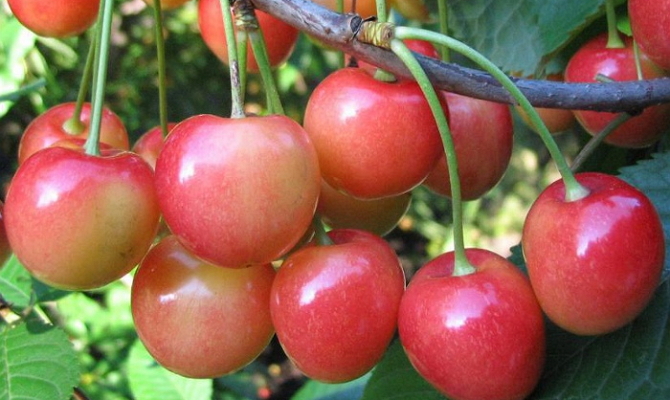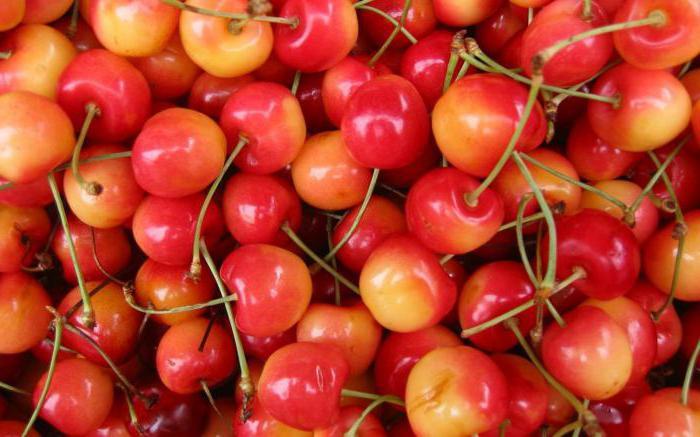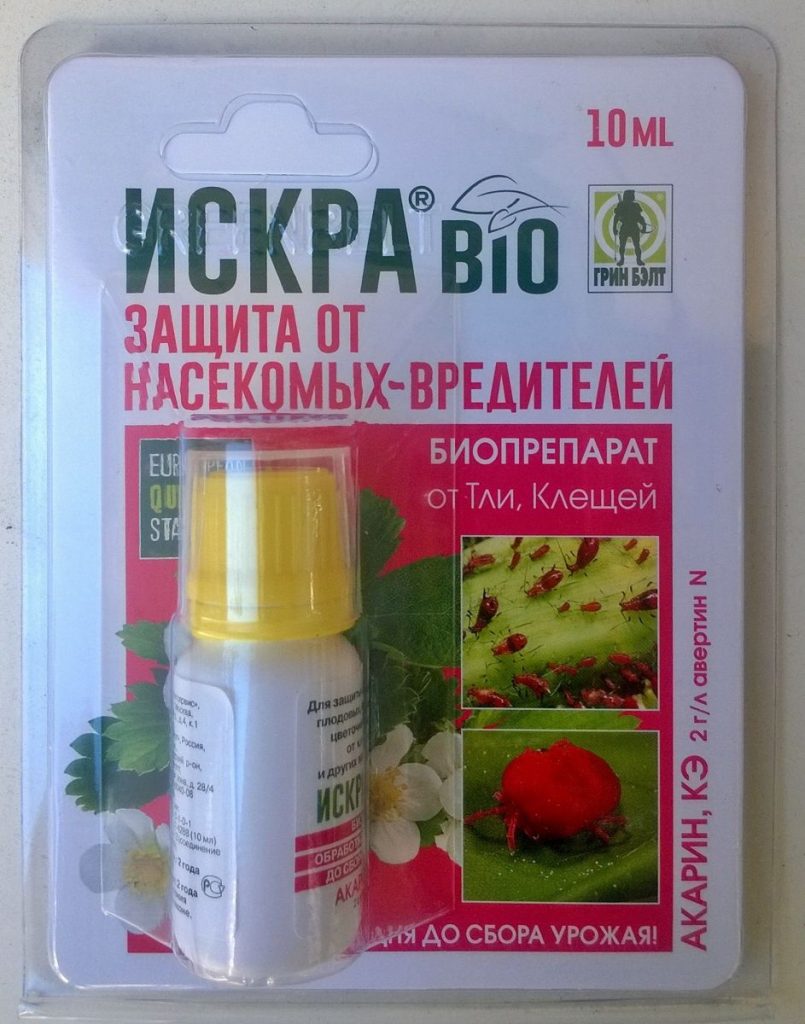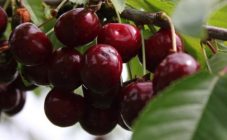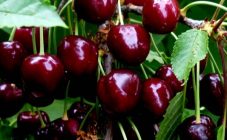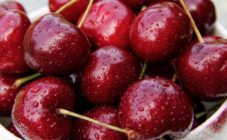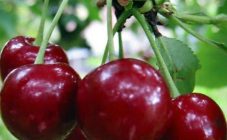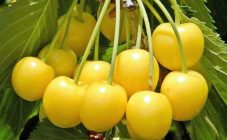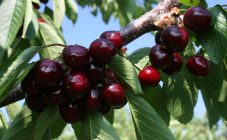Content:
Breeders work tirelessly and develop new varieties of cherries, which are characterized by large and tasty fruits, high resistance to diseases. Most varieties are intended for cultivation in warm regions of the country. There are not so many fruit trees intended for cultivation in the northern regions; the existing varieties of sweet cherries can be enumerated on one hand. We are talking about the sweet cherry Julia, which has high rates of abundance of fruiting and winter hardiness, is able to live and develop in northern conditions.
Sweet cherry Julia: variety description
Sweet cherry Julia was obtained by crossing the varieties Gini red and Denissen yellow. The hybrid was developed in Russia, near Voronezh, at the Rossosh experimental station.
The cherry variety was entered into the state register in 1992. Designed for cultivation in the Lower Volga and Central Black Earth region. You can hear different reviews about Julia, since undeniable advantages are combined with disadvantages that cannot be unnoticed.
Characteristics of the variety:
- Berries are characterized by large sizes, each weighing 5-6 g. The shape is rounded or takes the shape of a heart. The skin is yellow-pink, thin and glossy. A richer blush comes out if the drupes are well lit.
- The structure of the pulp is fibrous and firm, moderately juicy. The resulting juice is cloudy and colorless. Taste qualities are rated at 4.5 out of 5 points, without obvious individual characteristics. The detachment of the stalk and the separation of the stone from the pulp are average.
- The size of an adult tree can be called heroic without exaggeration. But, despite this, it is possible to collect about 20 - 25 kg from one tree. This variety of hybrid is characterized by an average ripening period, medium late, in the conditions of the Middle Lane, the crop can be harvested in late June - early July.
- The purpose of the berries is universal, they can be eaten fresh, as well as prepared compotes, jelly, added to baked goods, etc.
- The trees are tall, the height of an adult fruit tree is 7-8 meters. The crone is characterized by a pronounced pyramidal shape, abundantly leafed and branched. Thin shoots are elongated, with internodes. The upper branches are located at an acute angle relative to the trunk, and the lower ones droop. During flowering, white flowers are formed, thinning the pleasant aroma. They are collected in inflorescences of 2-3 flowers.
The berries are sweet, the proportion of sucrose is about 14%. The hybrid variety is self-fertile, which indicates that pollination cannot occur between the inflorescences of the same tree.
To provide yourself with a harvest, you need to grow another, or better, several varieties of cherries nearby. For sweet cherries, Julia is the best pollinator - Denissena yellow. If the space does not allow planting another tree next to it, it is recommended to plant a crown of two or three branches of other varieties.
Frost resistance indicators are excellent.
Agrotechnics
The first few years, the trees grow rapidly, begin to bear fruit for 4-5 years. The hybrid variety is one of the most frost-resistant, without damage, the plant is able to withstand a drop in temperature to -30 degrees.Even if the temperature reaches a critical point, the vast majority of flower buds will survive and continue to bear fruit abundantly.
Possesses good disease and insect resistance. If you follow preventive measures, the most terrible ailments will be bypassed. Fungicides protect against fruit rot, coccomycosis and moniliosis. Unfortunately, it is almost impossible to irrigate the upper branches due to their impressive size. A ladder is recommended for wood processing.
Planting seedlings
Reproduction of the variety is standard. The most common method is inoculation, less often from the bone. The most favorable time for planting a grafted seedling is spring, when the soil has already thawed, and the leaves begin to actively bloom. The pit must be prepared in advance in the fall.
You can plant trees at the end of the growing season. When planting in autumn, fruit trees must be mulched, spud and insulated using inorganic materials or spruce branches.
For planting, you need to find the right place, otherwise the desired results will not be quickly achieved. When choosing a site, you should pay attention to the following points:
- Close proximity to other trees;
- Far from the lowlands.
- Deep occurrence of groundwater relative to the earth's surface.
- Lack of wind and drafts.
To protect the tree when growing in the north, it is recommended to plant it near buildings on the south side.
Care
Despite the fact that the variety belongs to unpretentious plants, fruit trees cannot be left without care. Against the background of the rapid growth of trees, their root system draws out all the nutrients from the soil. That is why it is very important to fertilize fruit trees regularly. To do this, you need to dig a furrow near the crown. It is poured with water, and after that it is poured with a solution with organic or mineral fertilizers.
It is recommended to apply nitrogen with the onset of spring, so that the plants have time to assimilate all the chemical elements for building up green mass. It is advisable to apply potash fertilizers to the soil immediately before flowering and during the formation of drupes. Superphosphate in the form of granules is added to the soil in the fall; heavy rains should dissolve the mineral. Shoots are recommended to be trimmed as often as possible.
The tree and the soil around it should be irrigated with a solution of urea in late March - early April in order to destroy all pests that have wintered on the crop. At intervals of 20-25 days, spraying with chemicals that are designed to repel insects should be carried out. During use, it is necessary to strictly follow the attached instructions for use. Gardeners recommend using Iskra-Bio, FitoVerm and Healthy Garden.
A group of drugs was also developed, the main task of which is to increase the resistance of fruit trees to pests and diseases. Experienced agronomists advise beginners to process the bark of a cherry tree with a solution of iron or copper sulfate in early spring. In order for the active substance to stay on the bark and be absorbed, it is recommended to add a few drops of office glue to the resulting solution.
Advantages and disadvantages
The most obvious advantages of the variety:
- Excellent indicators of frost resistance of a tree and generative buds (intended for growing in northern latitudes).
- Excellent taste is characteristic.
- Good fruit density and tough skin, thanks to which it is possible to store the fruits for a long time, as well as subject them to transportation over long distances.
Despite the small number of advantages, there are disadvantages that, unfortunately, cannot go unnoticed:
- Slight early maturity.
- The tree occupies an impressive area, high.
- Indicators of abundance of fruiting are moderate, the variety is susceptible to temperature extremes.
The described hybrid variety is intended for cultivation in the northern regions. As a rule, it is grown by those agronomists who have an impressive summer cottage or those who have already purchased a summer cottage with this fruit tree.
The Julia variety is rapidly losing its popularity, since many other varieties are being developed that have advantageous features and do not have such a list of disadvantages.
